Game Design Books
The Reverse Design series is now available in print! (And also a much nicer eBook format for any mobile device.) Click any of the links below to check out the new editions. Note that that with the print release, several books have been greatly revised and expanded and contain never-before-seen content.
To get a 25% discount on the books, use this discount code: JML20
Reverse Design: Chrono Trigger

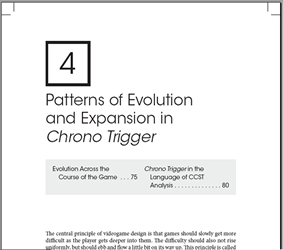

Originally the second volume in the series, this book has been greatly revised and expanded from the original version. Reverse Design: Chrono Trigger examines the beloved RPG's many brilliant design features. The book takes as its thesis that Chrono Trigger is really two different games: the Tragedy of the Entity and the Comedy of the Sages. It explains what that thesis means, and how the designers use gameplay to preserve and embellish the surprises in the plot. It also highlights how the two games differ in terms of tone, linearity, player choice and in the pacing of their content.
It also includes:
- Comprehensive definitions of key concepts and terms, introducing the reader to the basic knowledge about the study of RPG design
- Summary of historical context of Chrono Trigger how it came to be, how it influenced other games, and how it manipulated players through expectations they had about the RPG genre.
- Extensive collections of data and data visualizations explaining how Chrono Triggerís systems work and how the gameís challenges increase in complexity as the player gets deeper into the content
Reverse Design: Final Fantasy VII
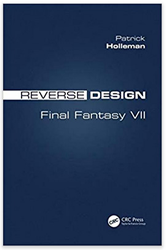
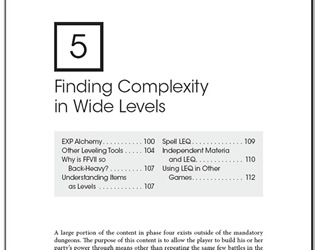
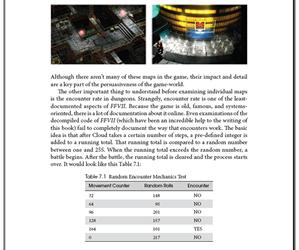
This is the fifth installment in the Reverse Design series (and the author's personal favorite), looking at all the design decisions that went into Final Fantasy VII. This book examines how many latter-day critics have misunderstood the artistic goals of Final Fantasy VII, and misunderstood the kind of RPG it wanted to be. The book also looks at:
- How RPG history began to diverge significantly after 1981, allowing for the creation of specialized RPGs like Rogue, Pokemon, and especially Final Fantasy VII
- How Final Fantasy VII does not abandon complexity in its systems, but simply moves that complexity to the endgame to aid the narrative elements of the game
- Extensive collections of data and data visualizations explaining how Final Fantasy VIIís systems work, how they are organized to prioritize exploration, and how they interlock in a positive feedback loop that peaks at the end of the game
Reverse Design: Super Mario World

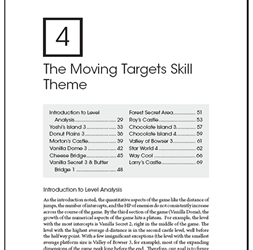
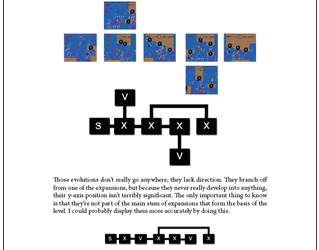
The most widely-used entry in the Reverse Design series, this book looks at all the levels in the classic Super Nintendo platformer, and explains the method by which they were made. This version is greatly expanded and revised from the original online version. The first three sections of this book look at Super Mario World's place in the history of videogame design, the concept of "cadences" in level design, and the high-level organizational structure called "skill themes." The subsequent chapters analyze all of the levels in the game, and give the reader the tools to analyze levels in other games by the same method. The ideal experience of this Reverse Design is for the reader to play each level as he or she reads its analysis.
Reverse Design: Final Fantasy VI
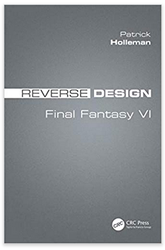
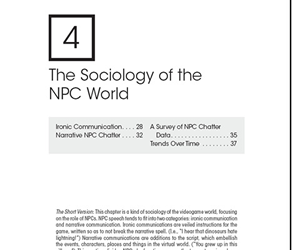
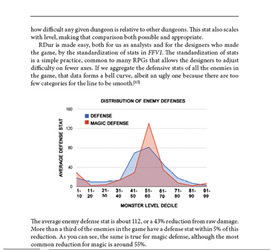
The first volume of the Reverse Design series, greatly revised and expanded in this edition, this book examines all of the design choices that went into the classic RPG Final Fantasy VI. It explains:
- How narrative elements, specifically the design of the fourteen player-characters, was the critical constraint which shaped the gameís production
- How the game broke with numerous RPG traditions in order to focus on plot and characterization, while still maintaining mechanical depth
- How the systems were designed to allow the player to use any combination of characters with equal levels of success
And also includes...
- Comprehensive definitions of key concepts and terms, introducing the reader to the basic knowledge about the study of RPG design
- Summary of historical context of Final Fantasy VI how it came to be, how it diverges sharply from the class-based design ideas of older RPGs, and what systems in uses to replace those old ideas
- Extensive collections of data and data visualizations explaining how Final Fantasy VIís systems work, how those systems evolve across the course of the game, and how the overall game systems were designed to be balanced easily
Reverse Design: Diablo II

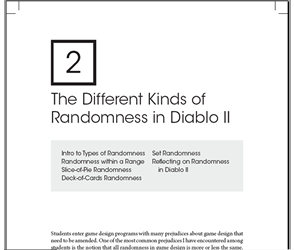
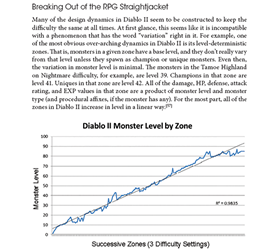
The sixth installment in the Reverse Design series, this book examines the design of the classic PC RPG, Diablo II. Written in a readable format, it is broken down into three sections examining three topics important to the game:
- How does Diablo II borrow from different types of games like action RPGs, classical class-based RPGs and Roguelikes?
- What are the different types of randomness in Diablo II and how do they work?
- How do elaborate level-up mechanics keep players interested in a relatively short game for dozens or hundreds of hours?
Reverse Design: Half-Life
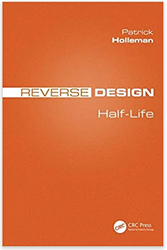
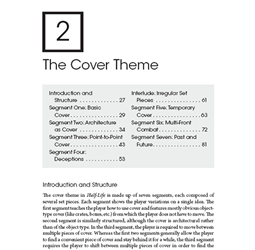
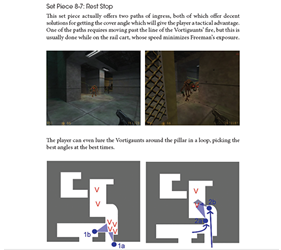
This is the fourth installment in the Reverse Design series, looking at Half Life. Written in a readable format, it is broken down into six chapters examining some of the most important topics to the game, including:
- Comprehensive definitions of key concepts and terms, introducing the reader to the basic knowledge about the study of FPS design
- Summary of historical context of Half-Life, how it emerged from arena shooters like Doom and Quake, and how it influenced other games
- How Half-Life is a key step in the evolution from the composite style of videogame design to the set piece style of design.
- How Half-Life defined almost all of the core concepts of the cover-based shooter, and redefined the level architecture of the FPS genre
- The small tricks and flourishes that Half-Life used to tell a story through its mechanics, AI and environments
- Extensive collections of data and data visualizations explaining how systems like enemy movement, cover design and platformer physics work.
All material copyright by The Game Design Forum 2022